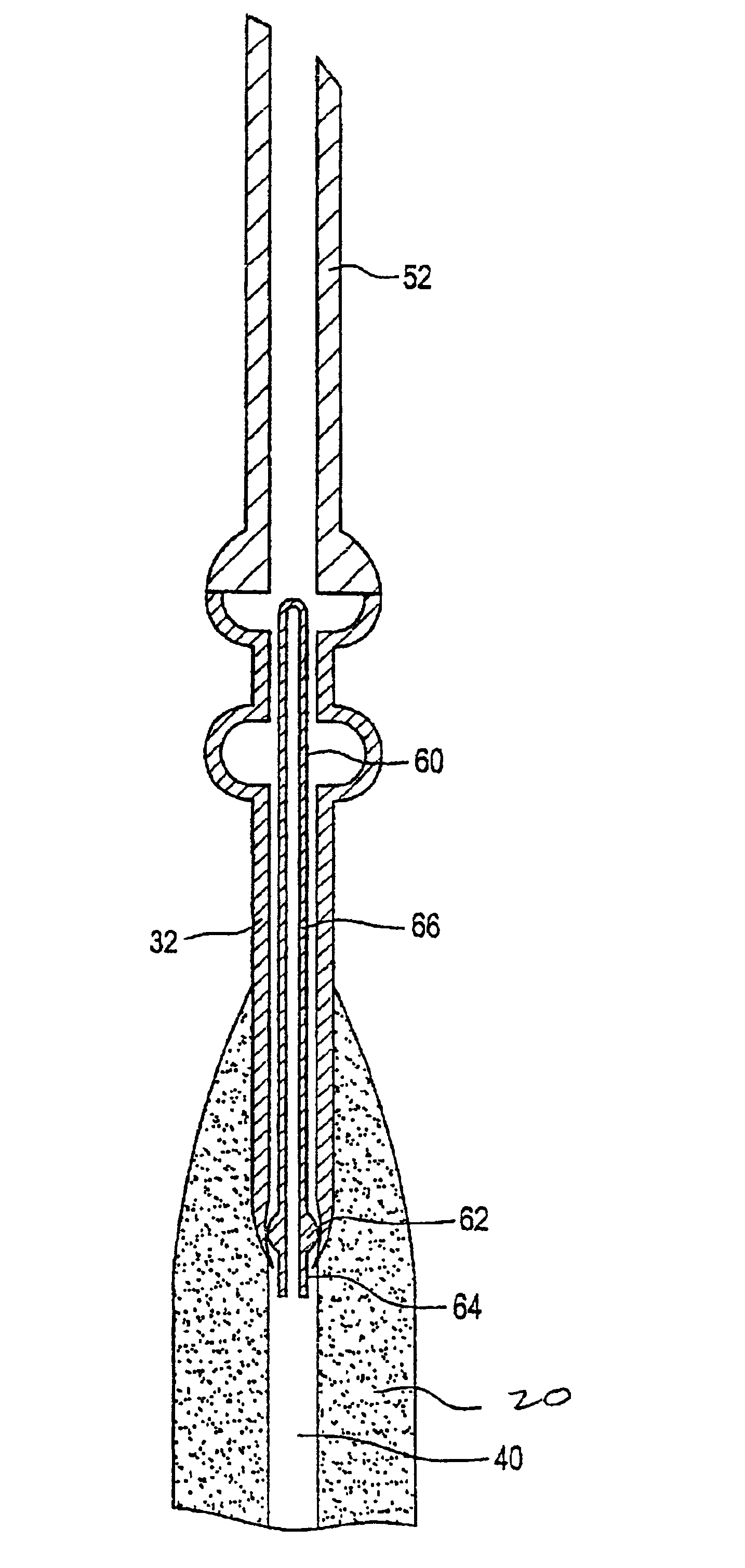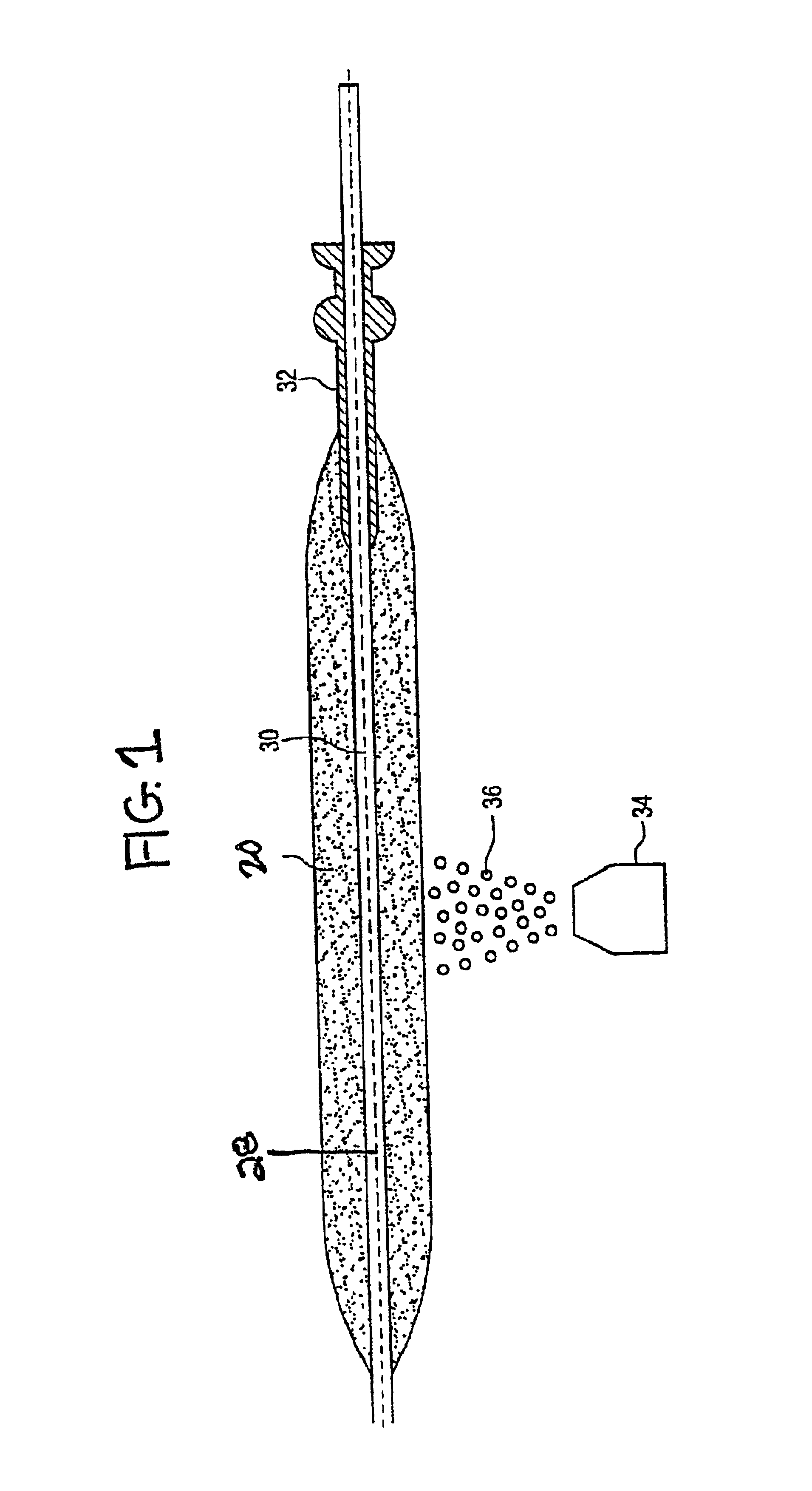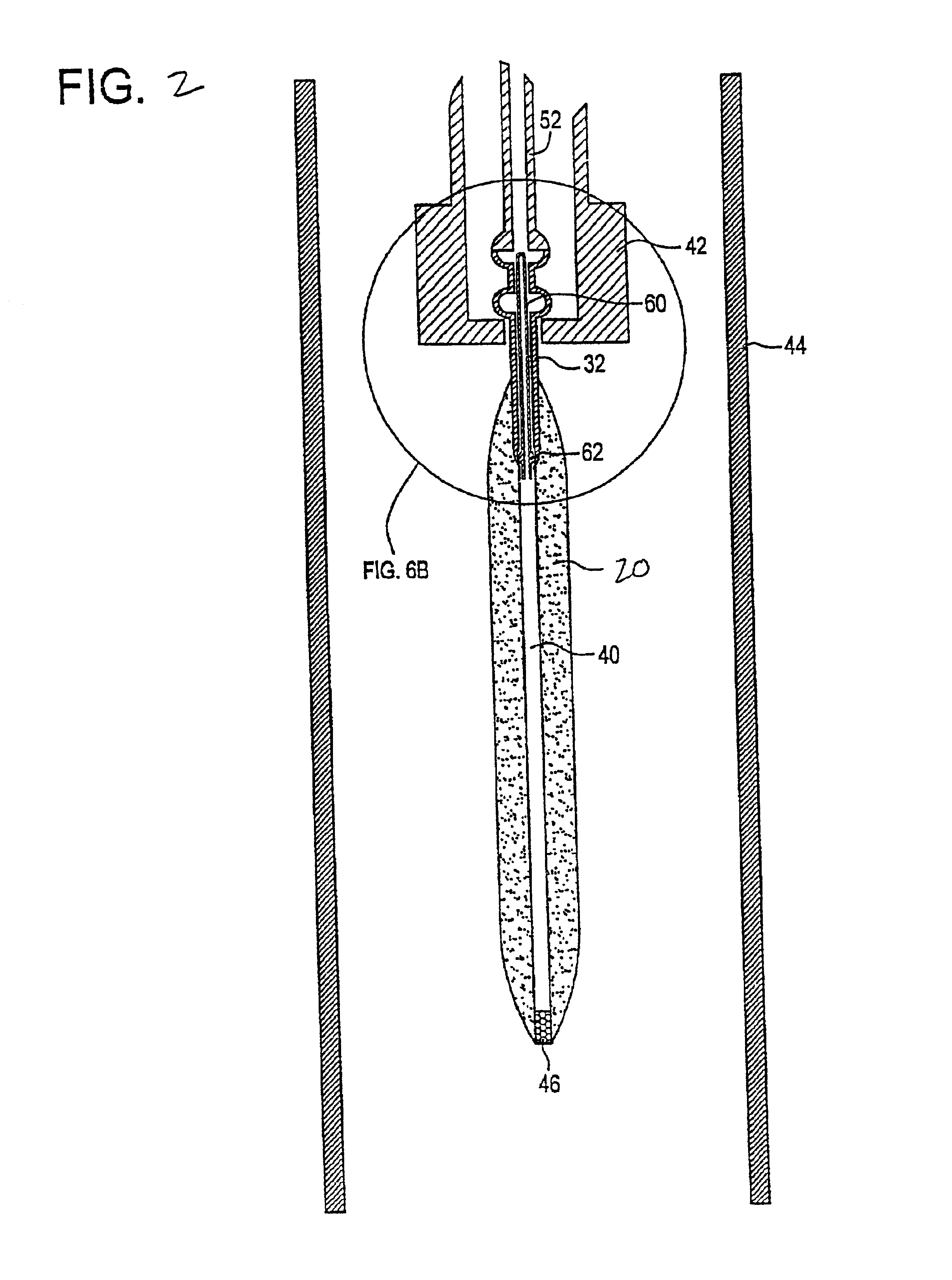Method of making a glass preform for low water peak optical fiber
- Summary
- Abstract
- Description
- Claims
- Application Information
AI Technical Summary
Benefits of technology
Problems solved by technology
Method used
Image
Examples
example 1
[0162]A membrane ballast plug or hollow tubular glass plug was exposed to about 3% D2 and balance nitrogen gas environment at a temperature of 1000° C. for about 24 hours. Germania doped soot was deposited onto a mandrel and a handle. The mandrel was removed, yielding a soot preform with a centerline hole with the handle jutting out one end. A tapered bottom tip plug was inserted into one end of soot preform opposite the handle with a friction fit. The previously deuterated membrane ballast plug was inserted into the other end of soot preform so that the membrane ballast plug rested in the handle at this point. The soot preform was dried with about 4% Cl2 (chlorine) and the balance helium gas at a temperature of 1125° C. for about 4 hours. The soot preform was then consolidated at a temperature of about 1500° C. in a helium gas environment. As the preform consolidated, the sintered glass pulled into engagement with the tip plug and the membrane ballast plug, thereby sealing the cent...
PUM
| Property | Measurement | Unit |
|---|---|---|
| Glass structure | aaaaa | aaaaa |
Abstract
Description
Claims
Application Information
 Login to View More
Login to View More - Generate Ideas
- Intellectual Property
- Life Sciences
- Materials
- Tech Scout
- Unparalleled Data Quality
- Higher Quality Content
- 60% Fewer Hallucinations
Browse by: Latest US Patents, China's latest patents, Technical Efficacy Thesaurus, Application Domain, Technology Topic, Popular Technical Reports.
© 2025 PatSnap. All rights reserved.Legal|Privacy policy|Modern Slavery Act Transparency Statement|Sitemap|About US| Contact US: help@patsnap.com



